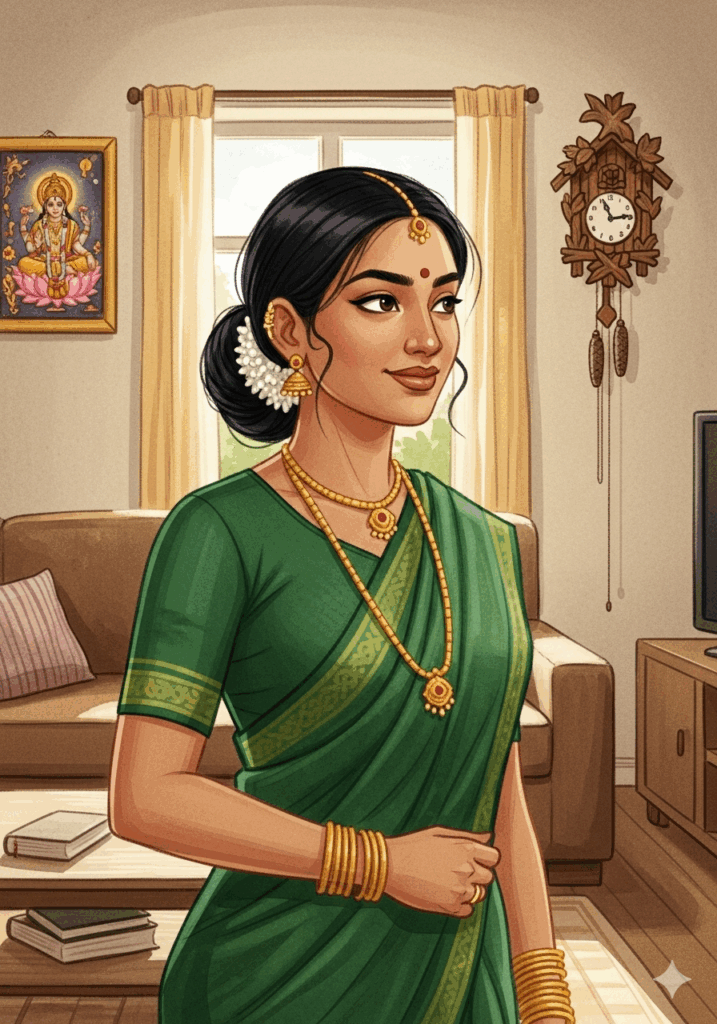
Sundari was born into a traditional family in southern India. She had always wanted to dance, particularly in the Bharatanatyam style. She spent most of her free time learning and mastering this dance form. She married an aeronautical engineer and moved to Germany with him. She learnt the language, found a nice job and later became a mother. Although everything went smoothly, she missed her home country, its customs, culture and cuisine.
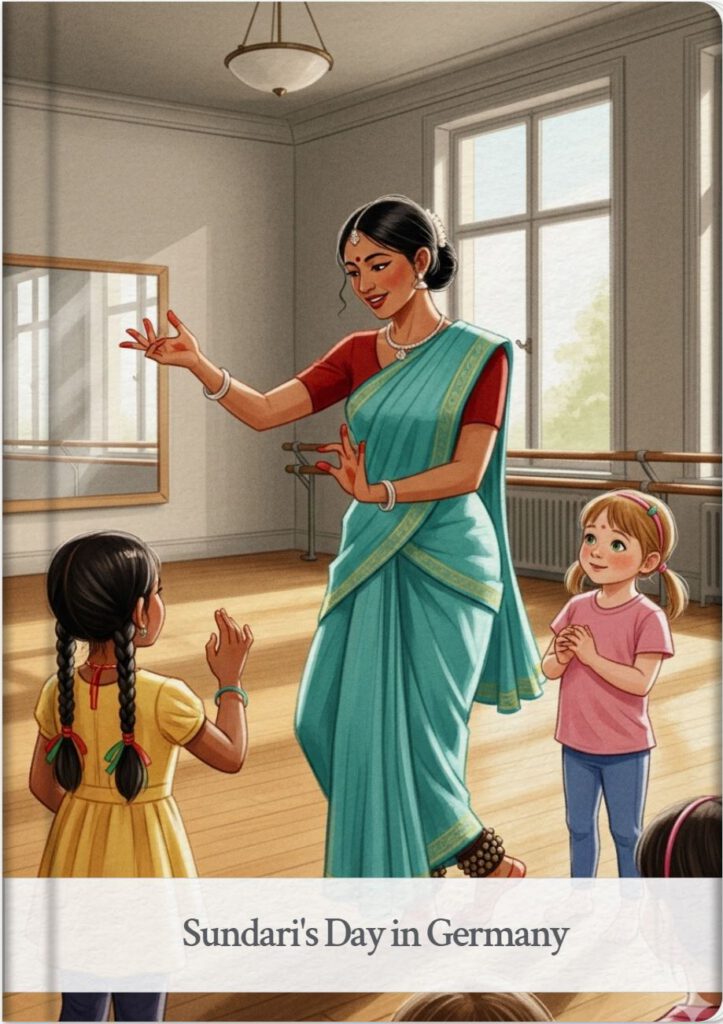
Whenever she could find the time, she would dance Bharatanatyam for her friends, and she would also teach the dance to the children of fellow Indians living in Germany.

The morning sun peeked into a kitchen in Germany, where the smell of cardamom tea mixed with the scent of fresh bread. Sundari hummed a tune from her childhood in India as she packed a lunchbox for her daughter, Priya. “A cheese pretzel and a mango slice,” Sundari said with a smile. “A little bit of Germany and a little bit of India, just like us.”

Hand in hand, Sundari and Priya walked along the cobblestone street to school. “Hallo, Sundari! Guten Morgen, Priya!” a cheerful voice called. It was Sundari’s friend, Lena, with her daughter, Sofia. The two mothers chatted while the girls giggled about a funny-looking cloud in the sky. Priya and Sofia’s teacher joined them.

After dropping Priya at school, Sundari visited the town’s outdoor market. She greeted the flower seller in German and carefully chose a bunch of bright red tulips. She loved the bustling market, a place full of life and friendly faces, where she felt truly part of the community.

Back home, Sundari went to a special room filled with sunlight. She changed into a simple cotton sari and tied a string of tiny bells, called ghungroo, around her ankles. This was her quiet time, a time to practice Bharatanatyam, the classical dance of her homeland, before her students arrived.

In the afternoon, the doorbell chimed. One by one, children arrived, their faces bright with excitement. Priya and Sofia ran in, already practicing their steps. Sundari’s living room transformed into a dance studio, filled with the happy chatter of her young students.
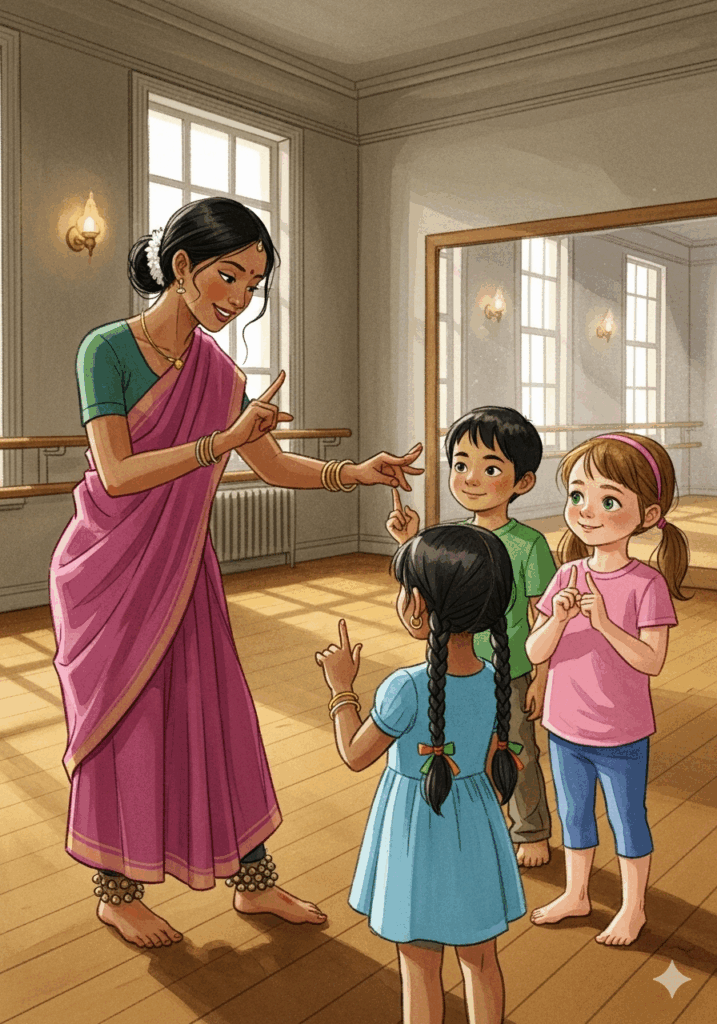
“Today, we will tell the story of a mischievous little elephant,” Sundari announced, her hands gracefully forming the shape of a trunk. The children watched, captivated, then tried to copy her. Their little hands moved with care as they learned to speak the beautiful language of dance.
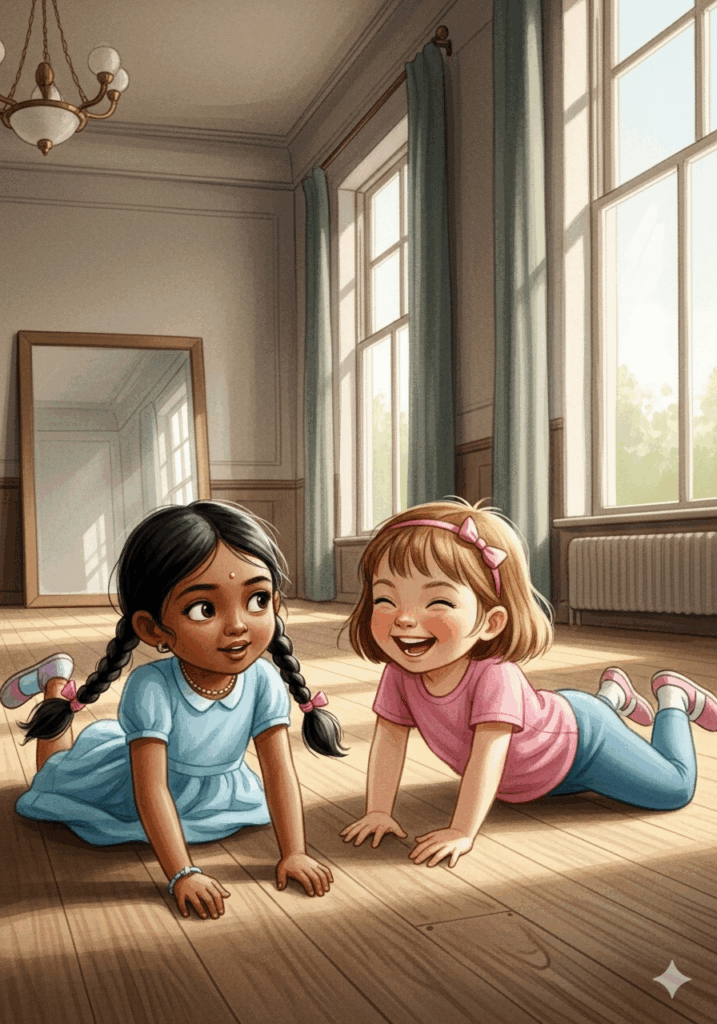
The room filled with the sound of tapping feet and jingling bells. Sundari clapped a rhythm, and the children stomped along. Priya stumbled and bumped into Sofia, and soon they were all in a heap on the floor, laughing. “The most important step,” Sundari said, laughing with them, “is to have fun!”

After the lesson, Sundari shared homemade coconut sweets with everyone. As Lena came to pick up Sofia, she told Sundari, “Sofia practices her ‘flower hands’ all week. Thank you for sharing your beautiful culture with our children.” Sundari’s heart felt full.
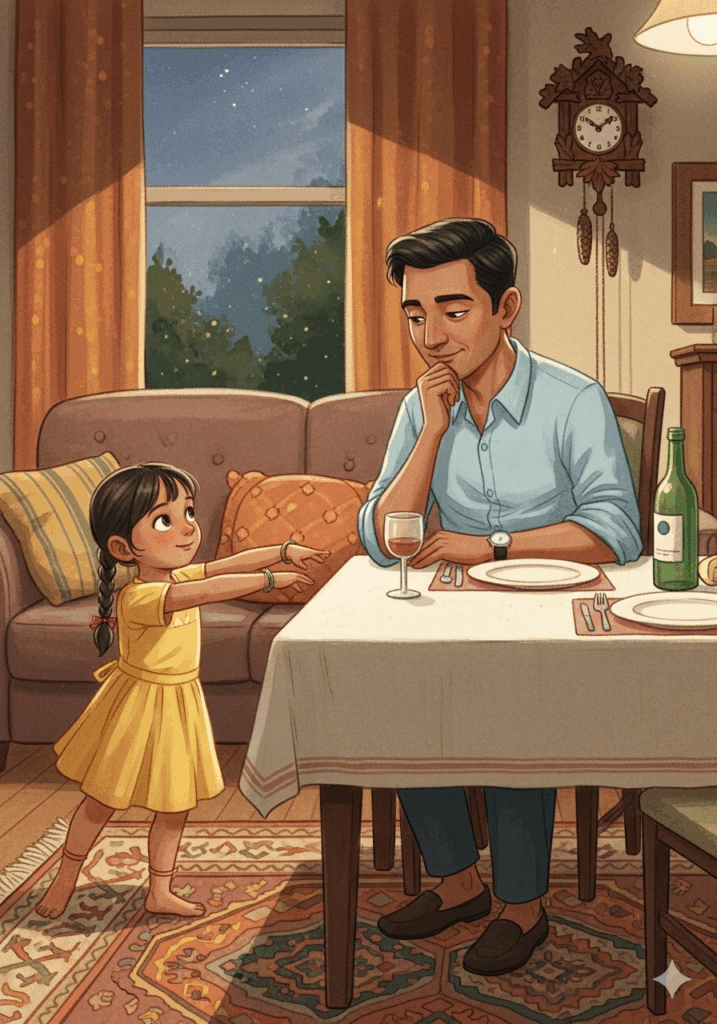
That evening, Sundari’s husband, Anand, came home. At the dinner table, Priya jumped up. “Papa, look what I learned!” she said, showing him the elephant trunk gesture. Anand applauded. “A beautiful story, just like your mother tells,” he said, beaming with pride.
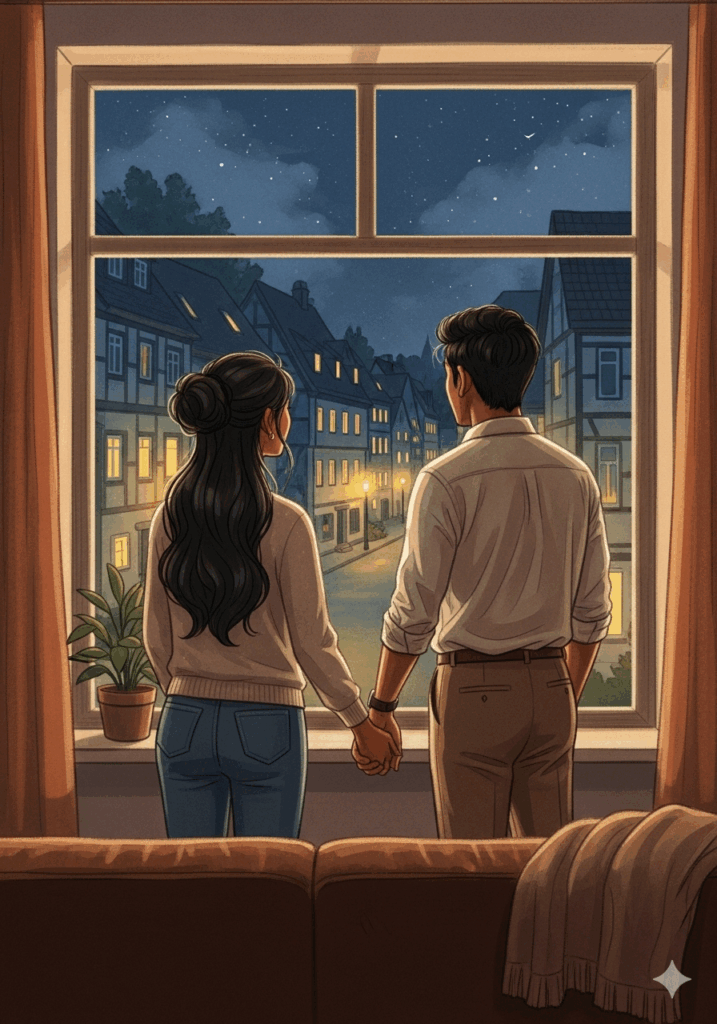
Later, as the town grew quiet, Sundari and Anand looked out the window. The lights of their German home twinkled softly. Sundari felt a deep sense of peace. Her life was a happy dance, blending old traditions with new friendships, and she loved sharing every step.
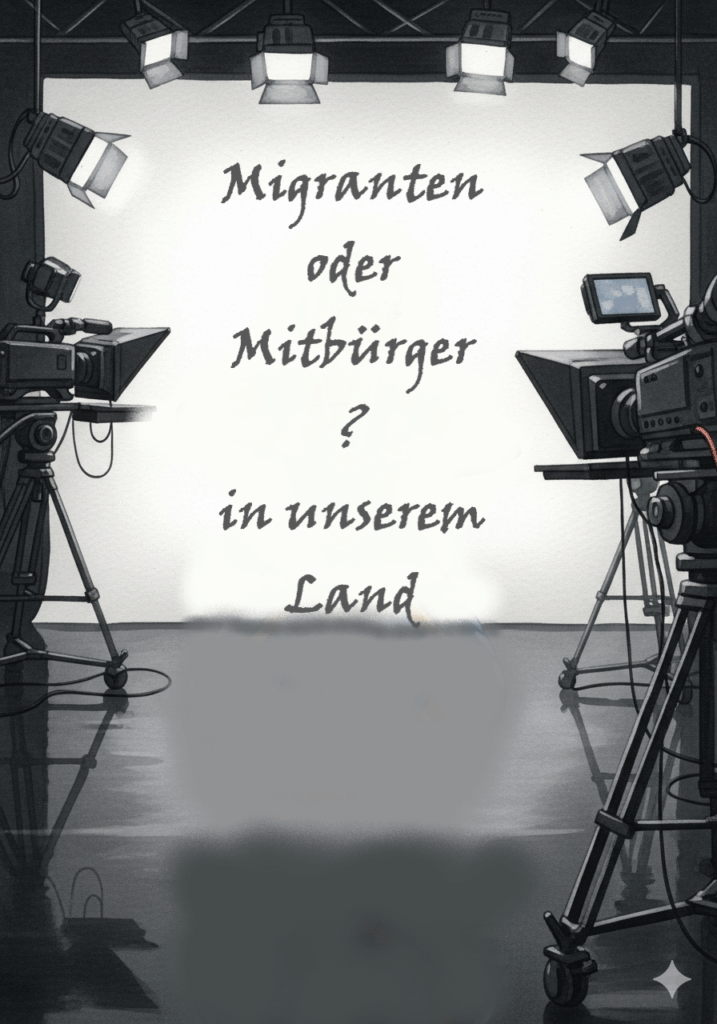
Once, a local TV channel wanted to make a documentary about migrants, and someone suggested that she represent the Indian community. The interviewer was impressed, but surprised when Sundari suggested that, instead of answering questions verbally, she would dance and use abhinayas* to express her answers through emotional dance.
*Abhinaya is a central concept in Indian performing arts, referring to the art of expression that conveys emotions and moods through gestures, facial expressions, and body movements.

Sundari stood before the television camera, her silk sari shimmering under the lights. The interviewer, Frau Schmidt, asked, “Can you tell us about your journey from India to Germany?” Sundari smiled. Her story would not be told in words. It would begin with a dance of love, Shringara, for her art, her husband Anand, and the new life they had chosen together.
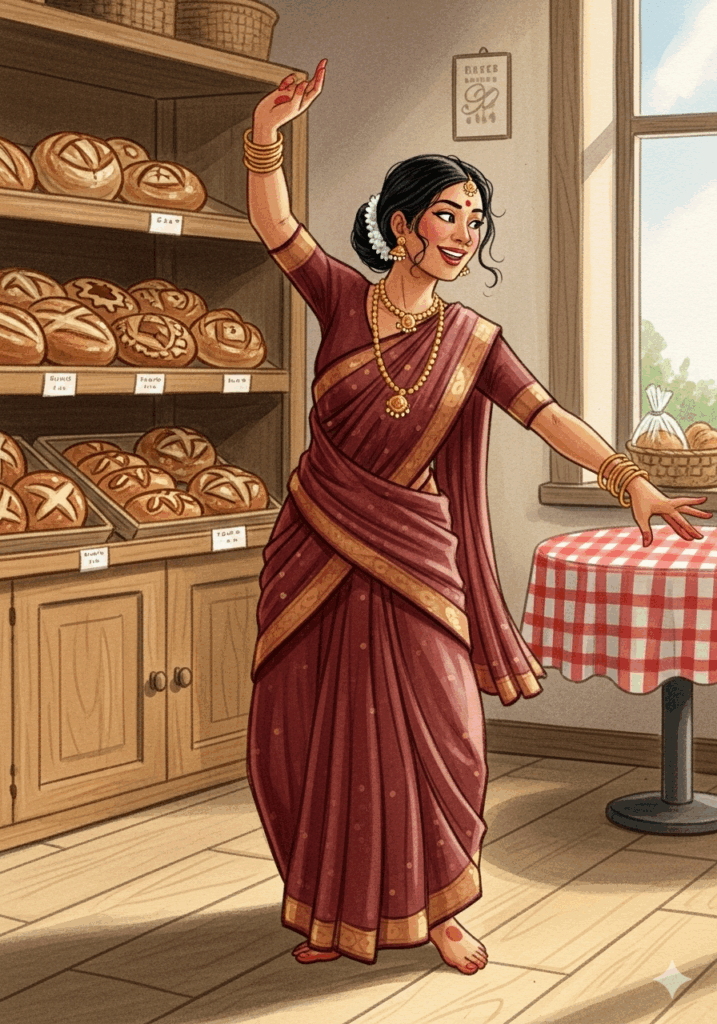
Next, her feet tapped a joyful rhythm. This was Hasya, the dance of laughter. She showed the funny moments of learning a new language, of mixing up “danke” and “bitte,” and sharing a laugh with the baker. She danced the pure joy of seeing snow for the first time, its cold touch a delightful surprise.
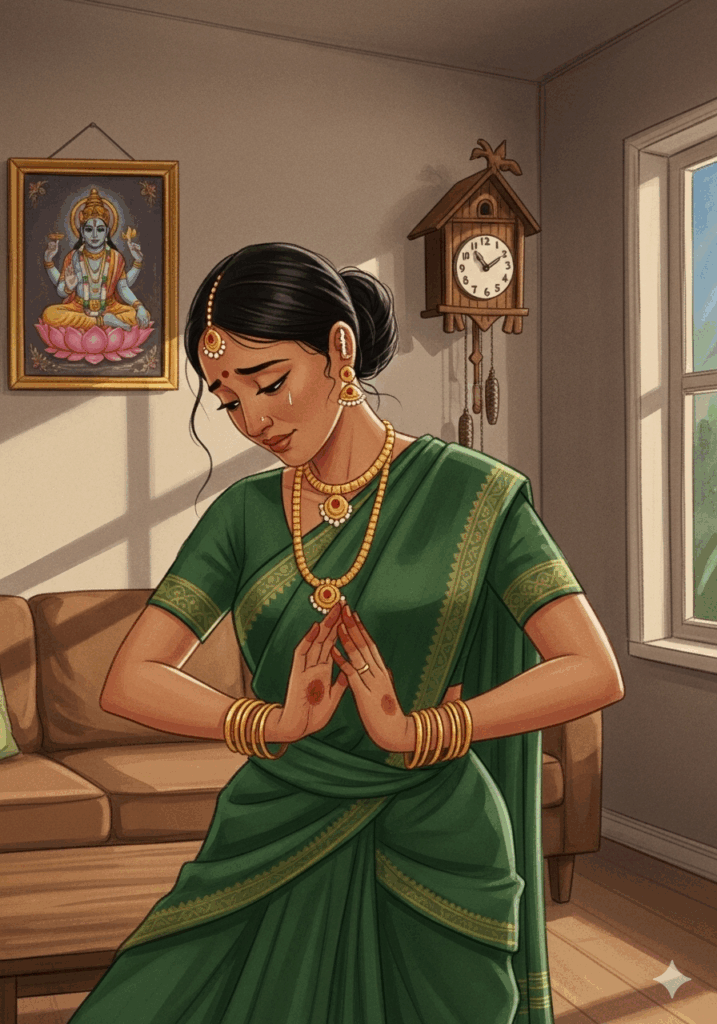
The music softened, and her expression shifted to Karuna, a deep sadness. Sundari’s graceful movements spoke of loneliness, of missing the scent of jasmine and the sound of temple bells on a warm evening. Her dance showed the ache of watching festivals on a tiny screen, her heart longing for her family so far away.

Then, a flash of fire! Raudra, anger, filled her movements. Her stomps were firm and loud. The dance told of her frustration when people made assumptions about her, or when they couldn’t see past the colour of her skin. It was a powerful declaration that she belonged here, in her new home.

From anger, her dance transformed into Veera, the spirit of a hero. Her movements became strong and determined. She danced the courage it took to study late into the night, to face interviews in a new language, and to build a career for herself. It was the quiet heroism of every person who bravely starts over.
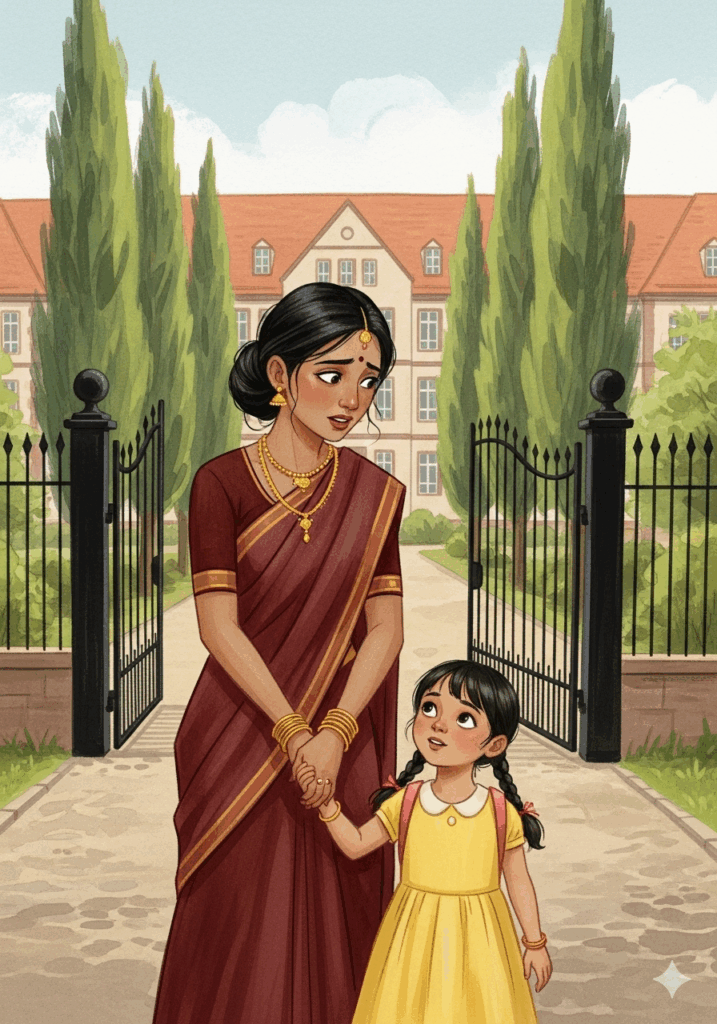
But there was also Bhayanaka, fear. Her eyes widened as her dance showed the fear of the unknown. Would her daughter, Priya, be happy here? She danced the moment she stood at the school gates, her hand trembling as she let go of Priya’s, hoping the other children would be kind.

A sharp turn, a look of distaste. This was Bibhatsa, disgust. Sundari danced her dislike for the cold, grey winters that seemed to last forever. She showed her frustration with prejudice born from ignorance, a feeling of distaste for unkindness in any form.
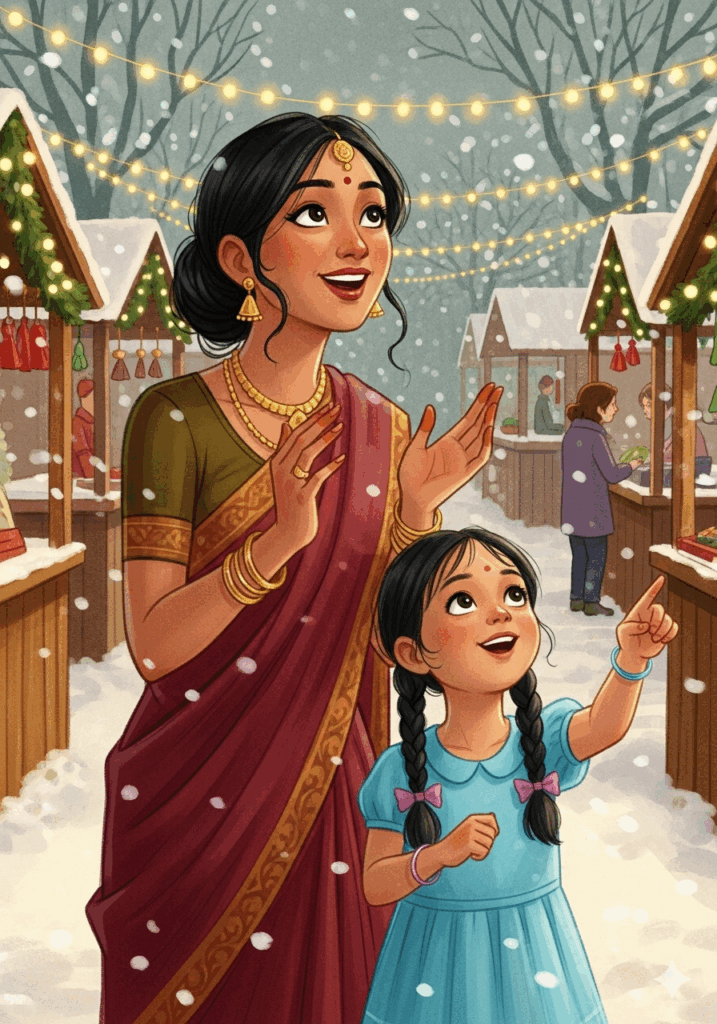
The mood lifted into Adbhuta, a dance of wonder. Her movements were full of surprise and awe. She showed the wonder of seeing the towering Alps for the first time, the magic of twinkling Christmas markets, and the special joy of hearing her daughter Priya chatter away in both German and Tamil, a perfect bridge between two worlds.
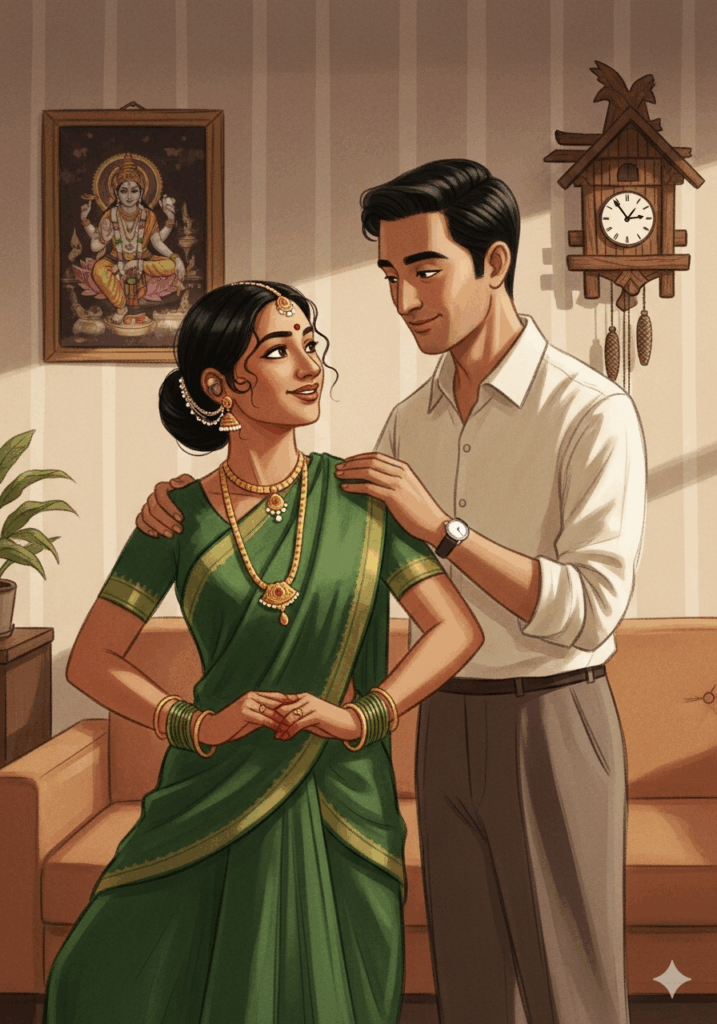
Finally, her dance slowed to a gentle stillness. This was Shanta, peace. She had found it here, in this new land. She danced the peace of teaching her culture to a new generation and the quiet joy of a home filled with the love of her husband, Anand, blending the best of both her worlds.

As the final note faded, Sundari held a pose of perfect balance. Frau Schmidt was speechless, her eyes filled with understanding. Sundari had not just answered a question; she had shared her entire life. In the heart of Germany, the spirit of Bharatanatyam told a story for the whole world to see.